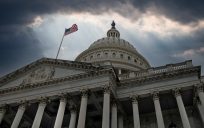The 2008 economic recession hit states particularly hard. Tax revenue was plummeted. Budgets shrank. Simply put, economic times were tough. But in the five years since the recession, states have seen a bit of a recovery. A new S&P report ranks how states have recovered from the recession and warns some states about policies they’re pursuing.
Gabriel Petek, an analyst for S&P and co-authored the report, told me during GovLoop’s State and Local Spotlight interview that they did the report to understand how states were managing and preparing for their upcoming budget cycles.
“Technically the recession ended in June of 2009, but unlike most of the economic recoveries from recessions that have occurred since the World War II era, this has been a relatively slow economic recovery. In many cases it doesn’t really even feel like much of a recovery.” Petek said that since the recession, many states have kept funding of programs at highly constrained levels even though the economy has been expanding.
Most states learned a valuable lesson from the recession. “Now more states are able to forecast their ongoing or recurring budgetary alignment between revenues and expenditures, much better,” said Petek. “But, not many states have been able to fully replenish their rainy day funds, which is another indicator of their financial flexibility in our opinion.”
So which states are the most prepared? S&P uses three measures to determine a state’s progress in its fiscal recovery: 1) whether or not general fund or operating fund balances are equal to or greater than the state forecast for the end of the 2014 fiscal year, 2) whether rainy day fund balances have been restored to at least their 2008 level, and 3) whether a state is funding its actuarially recommended pension contribution.
“A state’s ability to end the current fiscal year with a budget ending position that was equal to or greater than what they assumed at the beginning of the year indicates that they had made proper forecasts, and that they had retained proper spending discipline throughout the year, and that their performance was more or less in a structurally sound condition,” said Petek.
Based on those standards, six states are in the positive for all three categories: Indiana, Michigan, Rhode Island, South Carolina, Utah and Wisconsin. 24 states have recovered in at least two categories. Three (Kentucky, New Mexico and Pennsylvania) have not recovered at all, using S&P’s scoring.
Petek was no surprised by the results, “We have an ongoing dialogue with the states that we have bond ratings on. We also know that there’s a small number of states that still are experiencing some stress, and so even at the lower end where, where some of the states had, had only accomplished one or even none of those metrics, we weren’t especially surprised by that either.”
For the poor performing states there are a few things they can do to improve their circumstances. Petek said states should focus on recurring solutions to budget gaps. “If you look at the next fiscal year and there’s several hundred million dollar gap, we find that the states that are capable of identifying and implementing a solution can persist into subsequent fiscal years do better.”
If you enjoyed our GovLoop’s State and Local Spotlight interview, you can find more interviews under keyword “Emily’s Corner.”





Leave a Reply
You must be logged in to post a comment.